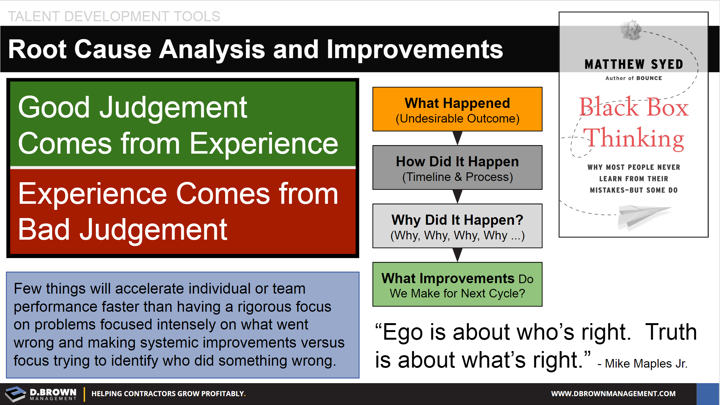They are part of everyone’s day. What separates out high-performing teams is a relentless focus on learning from these problems then creating systems and training to mitigate them in the future.
Low-performers look for “Who” did something wrong.
Low-performers put quick fixes in place and move on.
Low-performers avoid talking about failures, problems and mistakes openly.
High-performers view every failure, problem or mistake as an opportunity to learn.
High-performers ask lots of questions to identify the root cause of what happened.
High-performers then make plans to adjust for the next cycle.
High-performers raise up the whole team by creating new standards, processes and training when they find a better way.
Black Box Thinking was recommended to me by Sujata Bhide and dives much deeper into this topic.
We spend a lot of time with our clients helping their teams develop great skills at Root Cause Analysis + Improvements. Never easy; always worth it.

